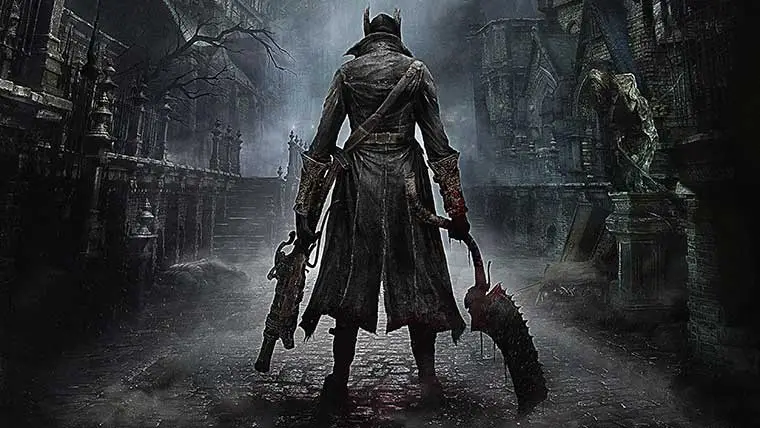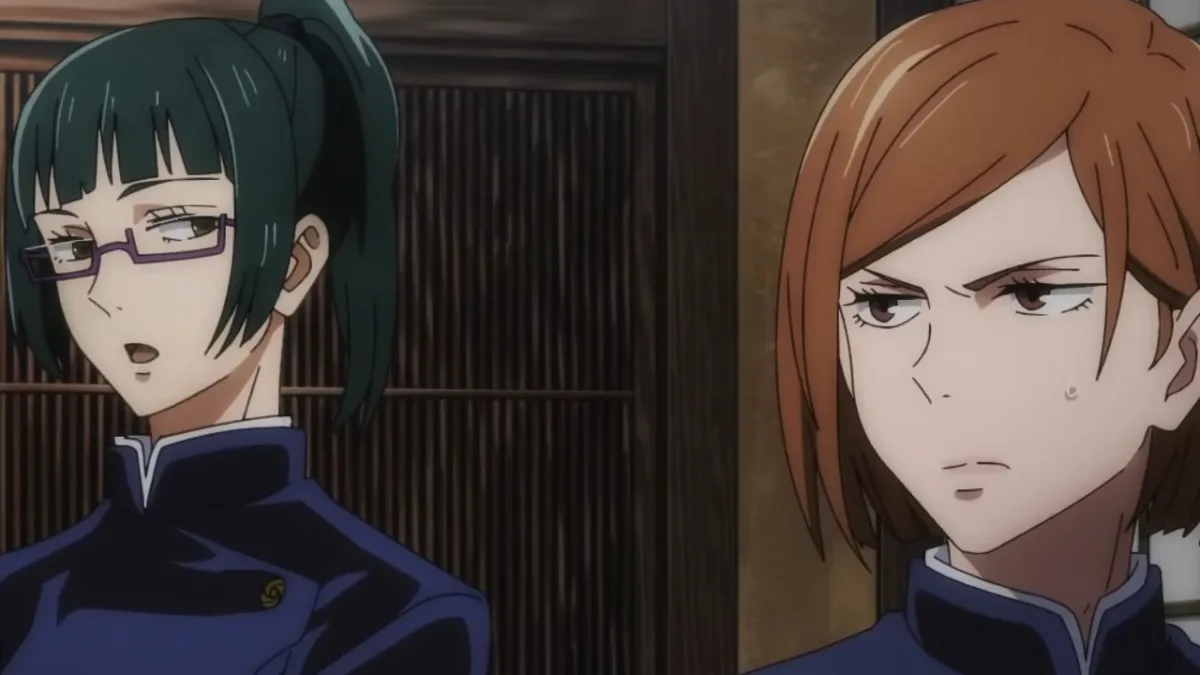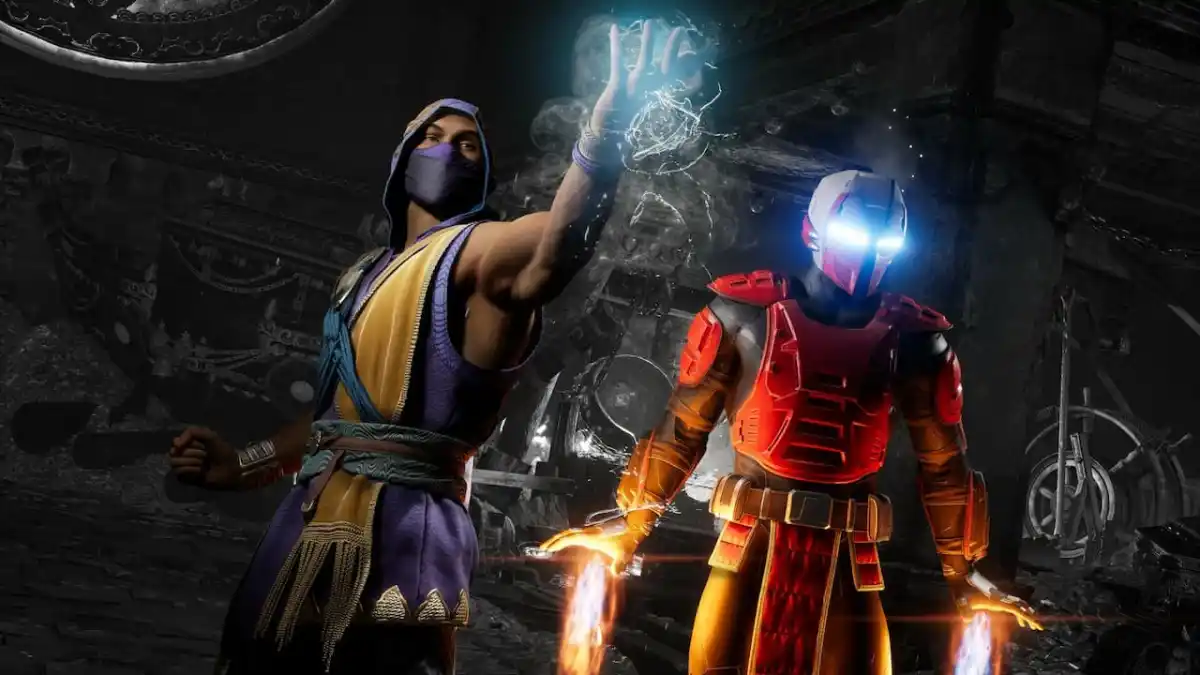I hated Demon’s Souls. I mean, I really hated Demon’s Souls. My twentieth death at the hands of the satanic Flamelurker marked the final nail in the proverbial coffin. In 2011, the PlayStation Network was infamously compromised, and in the months it took to rebuild, all online services were unavailable.
At the time, I was living the life of an impoverished college student, and games were hard to come by. The only single-player game I’d had left that I hadn’t completed was…Demon’s Souls. So I popped the disc back into my PS3, erased my character, and started again. And I beat the game. It was a combination of luck, the odd glitch and half-decent skill, but I beat the game. I love Demon’s Souls; I love the Souls series in general, in fact. Which is why I was so giddy, so uncontrollably, undeniably excited at Bloodborne’s release earlier this year. Sixty or so hours in, I’ve grown to love Bloodborne, but not quite as much as its predecessors.
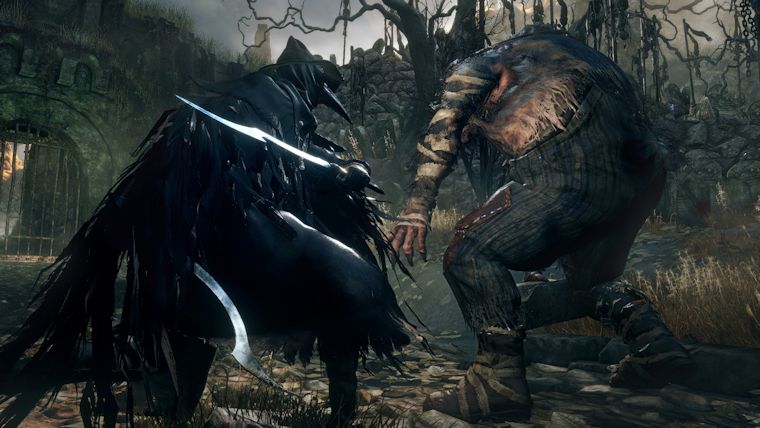
Bloodborne is a Souls game in all but name, and it married nostalgia with evolution, the familiar with something altogether new. You still lock onto enemies, and they still remain as lethal as ever, but your hunter was born out of the desire to inject speed, tension and dexterity into the tried and tested formula. My index finger had become accustomed to permanently holding L1 as my knight cowered behind his shield – not so in Bloodborne, there are no shields to hide behind.
The newly implemented sidestep and backstep afforded a new found speed that was incredibly satisfying to use. A new health mechanic also encouraged aggression, with players teased by the opportunity to recoup health they’d just lost, that is if they were quick enough. But somewhere there lies my biggest problem with Bloodborne – it isn’t punishing enough.
To critically analyse Bloodborne, one must first look at its inspirers. Demon’s Souls’ health system revolved around Moon Grass. Grass was bought from vendors or dropped from enemies, of which you could carry up to ninety-nine of each type, starting from Crescent Moon Grass (barely recovers any life) all the way up to Dark Moon Grass (heals you fully). It was a serviceable but flawed system. Farming for Grass in certain areas allowed players to build up an impressive portfolio of healing items, which had direct consequences and implications on the game’s difficulty.
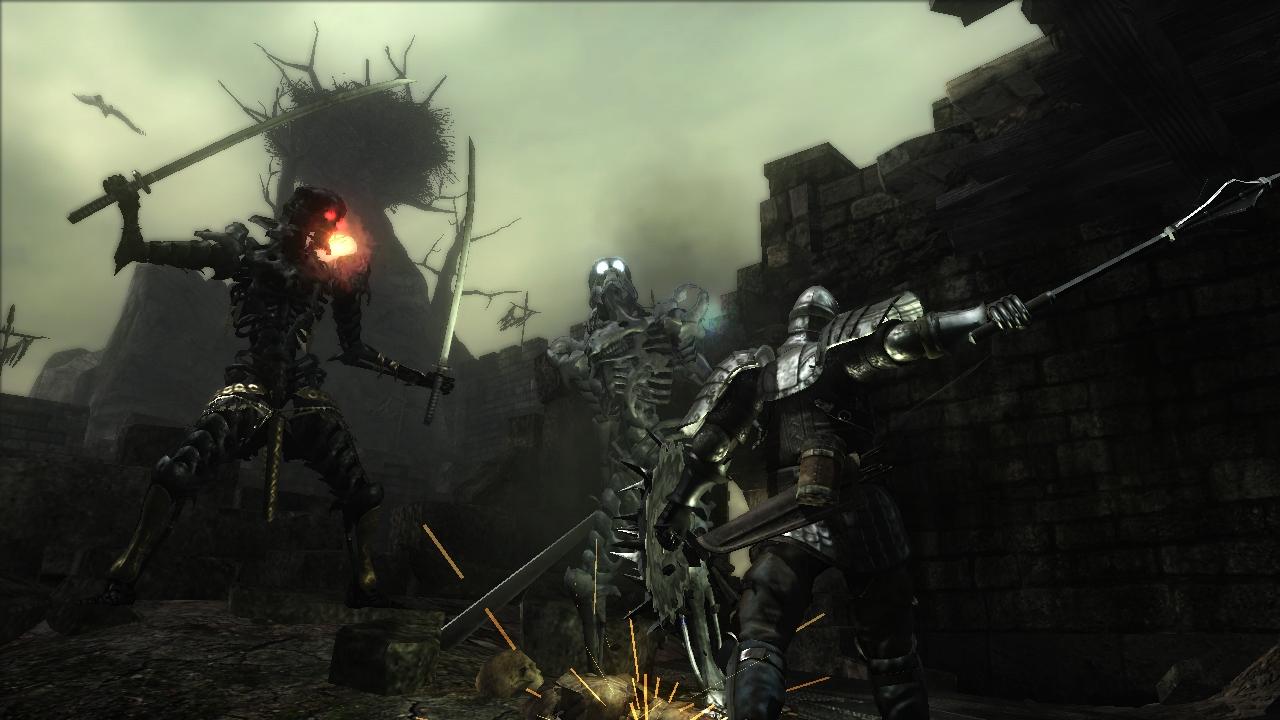
FromSoftware recognized the fault and corrected it masterfully in Dark Souls. Grass was removed, replaced instead by Estus Flasks. You couldn’t buy Estus Flasks, nobody dropped Estus Flasks and, most importantly, you were given only five. Five. Replenishing your measly quantity of Estus Flasks required you to reach the next bonfire (the game’s checkpoints) which often meant surpassing a litany of enemies or an incalculably powerful boss. As the game progressed, one could ‘kindle’ a bonfire, allowing ten or fifteen Estus Flasks to be carried at a time, but this required a precious and fairly uncommon resource in the form of Humanity (which was also used to permit online access).
Ninety-nine to five is fairly disparate, and it’s here where the challenge in Dark Souls arose. One of the earliest stumbling blocks in Dark Souls is the approach to the Taurus Demon, the game’s first post-tutorial boss. Reaching the Taurus Demon required manoeuvring past at least twelve enemies, all of which required no more than two or three hits to severely diminish, if not entirely deplete, your health. Reaching the Taurus Demon with enough Estus Flasks to make it through the fight was a challenge in and of itself, let alone the actual encounter. It was beautifully balanced; the player was never overloaded with healing items, nor were they so depraved that it became sadistic or unfair. It forced you to get better, rather than grind for an easy way out.
Bloodborne is cut from the same cloth as Demon’s Souls. Blood Vials can be purchased from vendors and are an incredibly common drop from the vast majority of the game’s enemies. The only improvement from Demon’s Souls’ grass is that twenty is the limit one can hold (although Runes can increase this slightly). But the result is the same as Demon’s Souls. It isn’t punishing enough. In fact, it’s worse. Demon’s Souls cut my life in half upon death – Bloodborne does no such thing. I leave a checkpoint with twenty Blood Vials and I reach a boss with that amount intact; not because I’ve not taken damage, but because the game is so incredibly, unbelievably, frustratingly liberal in giving me health.
My play in Bloodborne is incredibly sloppy as a result. I can steal hits, I can be impatient, because I know I can keep on healing and replenish my stock without much fuss. This ultimately meant that the fist-pumping, hair raising, indescribable moments of joy and adulation were few and far between in Bloodborne; if beating a boss or progressing through an area isn’t challenging then the whole point of the series is undermined.
There’s an understandable logic behind FromSoftware’s approach to Bloodborne’s health system. Aggression, tension, speed – these were the buzz words of From’s marketing campaign and the underlying ethos that separated Bloodborne from its predecessors. Quicker, frantic and more agile combat. Implementing Dark Souls’ stringent Estus Flask system would have undermined that very ethos, but choosing to follow the other extreme has done the game no favors. The game isn’t easy, but it isn’t hard enough either. Beating a Souls boss on my first or second attempt was a rarity but in Bloodborne, it’s commonplace; not because I’m particularly good, and not because I implement intricate and forward-thinking tactics, but because I can take a lot of hits and still recover.
The upcoming Dark Souls III thankfully sees a return to Estus Flasks. Praise the Sun.

Sizable, gothic architecture, enemies screaming in the distance and prominent arachnids that hang from every building – Yharnam makes Lordran look like Disney Land. Gone are dragons, knights and the undead, replaced instead by werewolves and foul beasts. Hidetaka Miyazaki, studio president and the game’s director, spoke much about his desire to emulate the brooding and ominous atmosphere that permeated the Tower of Latria level from Demon’s Souls. It doesn’t take long to realize that he and his team more than accomplished that goal in Bloodborne.
The prospect of imminent death breeds tension, but Bloodborne avoids the tropes and stereotypes that plague the horror genre to create a game that’s truly terrifying. Approaching a seemingly standard enemy, only for his head to explode into a bouquet of snakes, was as close as I’ve come to evacuating my bowels involuntarily since childhood. Yharnam also saw a continuation of the unbelievably intricate and meticulous level design that’s prominent in Miyazaki’s Souls titles, with exploration often rewarded with items or optional bosses.
With that having been said, Yharnam is the other major destination of my cynical criticism. I love the tone and I love the atmosphere, but Yharnam is severely lacking in variety. There’s the Forbidden Woods, Cainhurst Castle and a couple of the Nightmare locations, but other locations share too much of the same DNA. Logistics aside, the difference between Old Yharnam, Central Yharnam and Cathedral Ward is negligible.
Revisit the world of Dark Souls once more, if you will. Dark Souls posits the lush greenery of Darkroot Forest, the desolate metropolis of Anor Londo, the crystallized library of the Duke’s Archives, swamps, caverns filled with lava, vast lakes – it’s an impressive list. Every area has its own style and ambiance, while managing to maintain the sense that it was grounded in some kind of geographical reality; all these locations, despite their aesthetic differences, feel as if they belong in the same world.
That variety, while not as impressive, exists in Demon’s Souls, too. The Tower of Latria is heralded so highly by fans of the game due to its stark difference to Boletarian Palace or Stonefang Tunnel. Had every level followed the same aesthetic and atmosphere, then repetition would have served only to diminish its mystique.
And I feel that’s what has happened with Bloodborne. It’s unique, it’s gorgeous to look at, but it could do with a little variety.
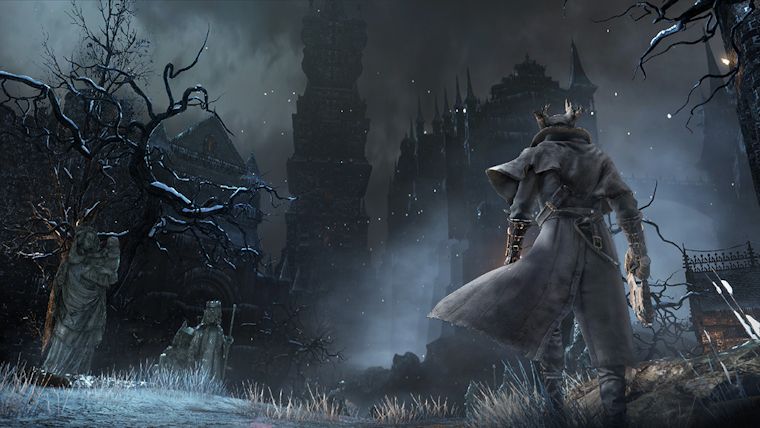
I don’t know how many different weapons and armor sets there are in Dark Souls. Twenty, fifty, one hundred? I don’t know. Loads. By the end of your 50~ hour adventure through Lordran, there’s a fairly good probability that your inventory is stocked full of weapons, armor sets and spells, a large variety of which you’ve probably never used.
There’s light armor, heavy armor, armor that’s somewhere in the middle. Then there’s long weapons, slow weapons, quick and short ones, weapons for strength builds, magic weapons…at times it’s overwhelming, but it instilled in me the desire to replay the game and experiment, explore and experience it from an entirely different perspective.
Bloodborne is much more streamlined in this respect. There’re only twelve weapons, although each has two transformable states, and only a handful of armor sets, with magic and pyromancy both assuming less prominent roles. It would be apropos to mention that the streamlined approach is beneficial for newcomers to the series, something Miyazaki also touched upon before the game’s release. There’re less stats to worry about, less upgradeable items, less weapons and less armor – it’s a far less daunting introduction.
There’s also less incentive to go back and do it all again, even with the introduction of the Chalice Dungeons; the closest thing the Souls games have had to a second mode. NG+ offers no tangible changes to the first playthrough and character builds are far, far fewer.
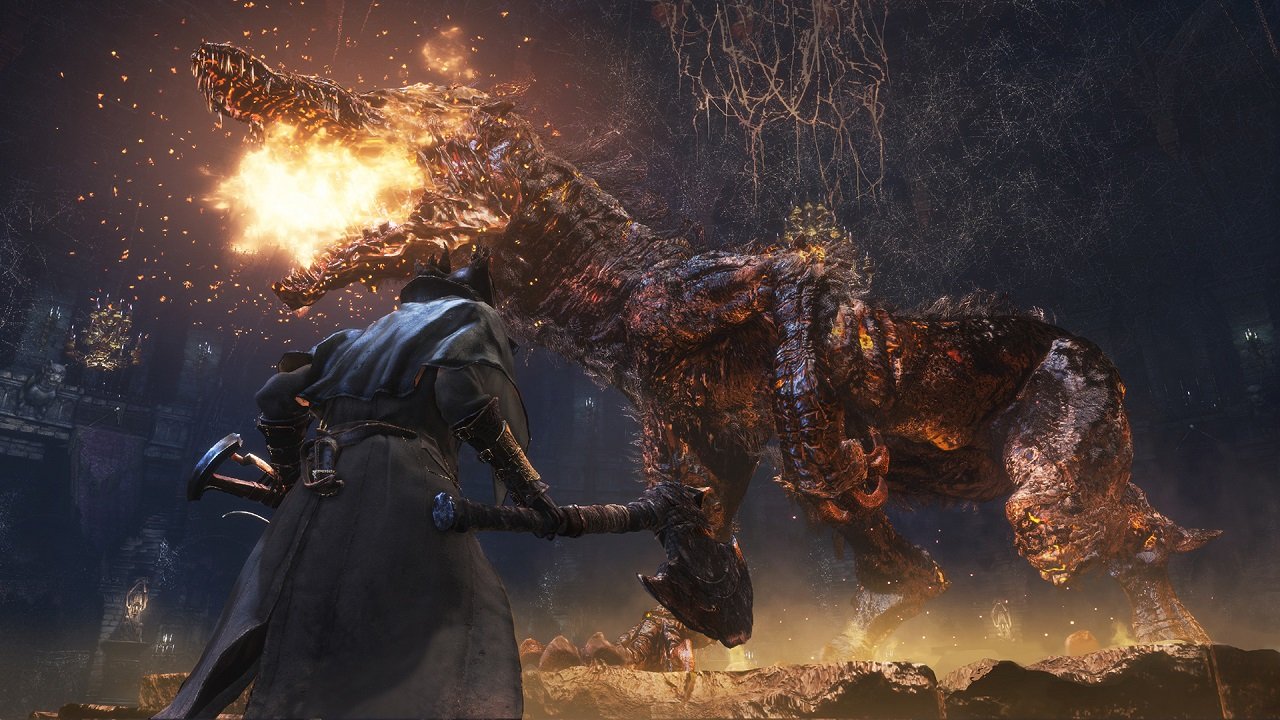
Bloodborne is, despite its issues, a terrific game. Taken on its own, it is a successful marriage of level design, enemy design and incredible gameplay. But its parents have already raised two other children. Bloodborne’s older siblings are that little bit better at everything. They’re a littler smarter, a little bit better looking, a little bit more successful.
Bloodborne was raised with the same love and care but it hasn’t evolved into the same beast; it feels like a missed opportunity. Some minor tweaks, and some slightly bigger ones, too, might have made it the best in the series. As it stands, it’s a flawed masterpiece, one that fails to knock Dark Souls off its perch.
But then again, I don’t know what game will.


